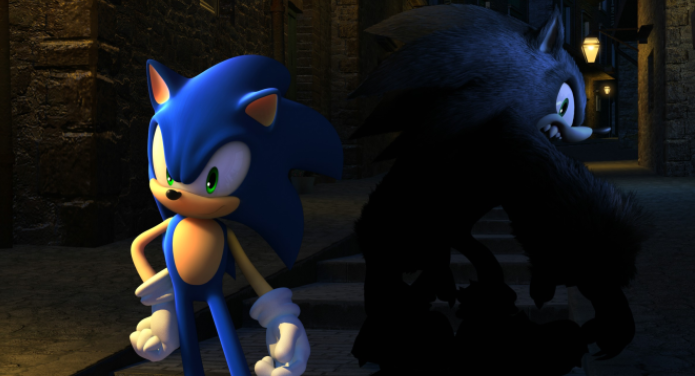Looking Back at Sonic Unleashed, Sega’s Misguided Masterpiece

Image Courtesy of Sonic Team/SEGA
By Joey Broom
If there’s anything I could compare Sonic Unleashed to, it’s a professional baseball player swinging the best swing of their entire career, one for the history books…if only they actually hit the ball. Unleashed is audacious, gorgeous, lengthy, and varied – seemingly every quality needed to win over the masses in 2008. Yet contemporary reviews were tepid at best and outright hostile at worst.
For Sonic fans, Unleashed was a make-or-break moment, and many were heartbroken to see critics tear the franchise to shreds yet again. But unlike most bad games, people still talk about Unleashed. Sixteen years removed from the context of its release, it’s hard not to appreciate its craftsmanship and creativity.
(Note: there are multiple versions of Unleashed, so this article focuses on the original PlayStation 3 / Xbox 360 version. It would be too unwieldy to cover the vastly different PlayStation 2 / Wii and mobile phone versions here. I recommend reading up on those versions, though, as they’re interesting in their own ways.)
Sonic’s fall from grace after Sega stopped manufacturing consoles remains one of the greatest tragedies in gaming. 2003’s Sonic Heroes didn’t exactly make a great impression thanks to its excessive number of characters and absurd bugginess, while 2005’s Shadow the Hedgehog was the subject of intense ridicule for its hilariously tone-deaf attempt to make the franchise “mature.” Sega then attempted to reboot the franchise with 2006’s legendarily awful Sonic the Hedgehog (better known as Sonic ‘06), which addressed the shortcomings of Heroes and Shadow by doubling down on them and quickly garnered a reputation as the video game equivalent to The Room. Just fifteen years old, Sonic was dead. Or so it seemed.
Sega is never one to back down. After all, this is the company that still pressed on in the console industry for as long as it could, despite failure after failure. Sonic’s developer, Sonic Team, was determined to salvage its mascot’s reputation.
Sonic Unleashed did away with a lot of the fluff that had come to be associated with Sonic. There’s no nonsensical, needlessly complex story that mistakes “darkness” and “angst” for “thematic depth” and “compelling writing.” There are few characters; the focus is largely on Sonic and Dr. Eggman duking it out on a globe-trotting adventure. Sonic games have garnered a reputation for being unpolished, buggy messes, but Unleashed is quite polished. The lighting and modeling were excellent for the time and still hold up incredibly well today, and there are very few, if any, game-breaking bugs.
Unleashed returns the focus to Sonic and his speed. Taking cues from the DS game Sonic Rush – one of the few 2000s Sonic games widely regarded as a classic – you aim to keep Sonic constantly accelerating as you dodge obstacles. To play well, you must memorize the level layouts and know when to press certain buttons or use certain techniques. You enter a flow state where it feels less like a platformer and more like a rhythm game. It’s a blast…except that for over half the game, you’re not playing these levels.
Instead, you spend more time in nighttime levels where Sonic transforms into a werewolf – sorry, “Werehog.” Beyond the concept’s colossal stupidity, the Werehog is plain unfun. A blisteringly fast and exciting platformer becomes an infuriatingly slow and tedious one constantly interrupted by combat sequences that play like a poor man’s God of War, with little enemy variety or incentive to learn combos and strategize.
The Werehog is a classic case of a developer trying to address criticism that they misunderstood. Complaints about Sonic’s extended cast weren’t motivated by disdain for the characters, but rather that they took focus away from the traditional Sonic gameplay with needless gimmicks, be it third-person shooting or physics-based puzzles. (Case in point: while the 2006 game is called Sonic the Hedgehog, you spend less than a third of it controlling Sonic.) Slapping Sonic’s face on the gimmick doesn’t address the fundamental issue at hand.
There are other baffling design decisions, ranging from frustrating progression requirements to boring filler minigames. Not to mention, the frame rate is abysmal on original hardware, rarely hitting the performance target. Emulation and backward compatibility on newer Xbox consoles thankfully rectify this, but it never should have been a problem in the first place.
Despite all this, the game is still enjoyable. For as bad as the Werehog levels are, the Sonic levels are good. They are endlessly replayable, with tons of alternate routes and shortcuts. Being able to play them makes putting up with the nonsense feel worth it. There’s also the soundtrack, which blends various worldwide music traditions to create a bouncy, energetic score that perfectly suits every environment.
Many of the core concepts in Unleashed would be refined by subsequent Sonic games. Its direct successors, 2010’s Colors and 2011’s Generations, focused entirely on that core Sonic gameplay, and they are two of the best games in the series. The upcoming Sonic X Shadow Generations also continues the Unleashed format, and it looks incredible. Unleashed may be a mess, but it is a fascinating, ambitious mess that remains fun despite everything working against it.






